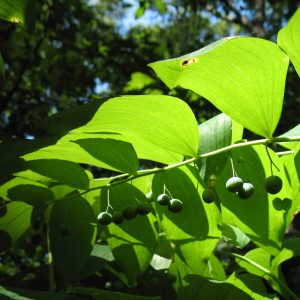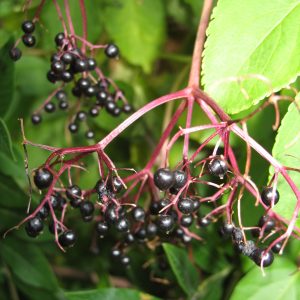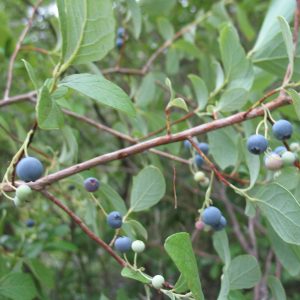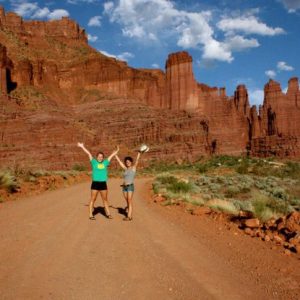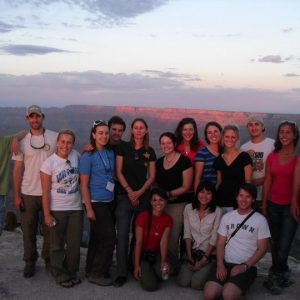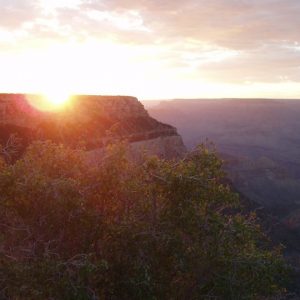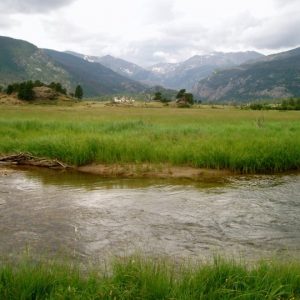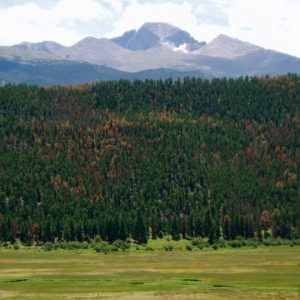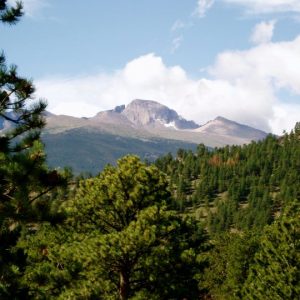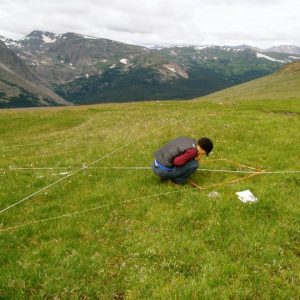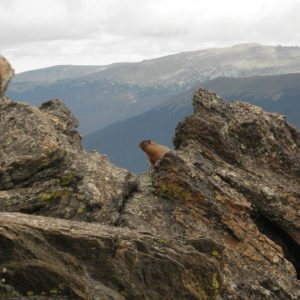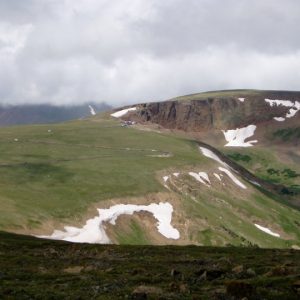Ben Copp
Nome, AK
July 28th
The helicopter we’re flying in is a Bell 206 Long Ranger. It seats 7, in the same way a VW bug seats 5. There have only been three of us so it’s perfectly comfortable. As the day goes: we pick an area and a few sites to visit, somewhere between 8 and 10 and head out to the furthest one and work our way back. Fuel and weight are our limiting factors. We’ve only got about 3.5 hours of fuel and as frequently as we power up in might be less. When we arrive at a site we look for a suitable place to set down and begin our survey. The surveys are simple and painfully unscientific. Laurie (my mentor) and I stand side by side and envision a semi circle. Within that area we consider the amount of cover of preferred lichen and the percent use of that lichen. We record these percents within classes, take two large steps and do it again. What we’re looking for are signs that the lichen has been grazed on or steps in the lichen. When it’s hot and dry the lichens crumble under foot and hold big prints, and when reindeer or caribou eat they pull out clumps of lichen but only eat the very tops and drop the rest.
I’ve been in a helicopter once before but here I am spending loads of time flying around rural Alaska, where there are no roads or people, only the occasional sign of human use, a cabin or a two-track, for a week. It’s awesome. I have a flight suit and a helmet and gloves, which make it bad-ass and get to see bears and reindeer and musk ox and hopefully some moose from the air. It’s a seriously good adventure.
Yesterday we got into a bit of a mess. We flew early, getting out to Tom Gray’s Range about 100 miles east of Nome. There were clouds around, some of them low to the ground but easy to fly around and avoid. We got to our sites, 10 of them. Ate lunch on the top of a hill, picked blueberries after surveying, generally having a great time despite a constant mists and chilling wind. It wasn’t comfortable working but always fun. I found a big moose antler at one of our sites but it was last year’s and had been gnawed on by some critters and torn apart so I left it to the tundra. Even in the rain it’s great to be out on the tundra, better in the sun of course but the rain seems to accentuate the colors of the white and green lichens, red and blue berries, green mosses and grasses. The complexity is hidden in just a few centimeters above the ground – it demands a close look. Every site is a little different. Some and boggy and wet, with high tussocks and lots of lichens and blueberry bushes, while other are in saddles or on hilltops that have been cleaned of lichens and turned mostly to rock. The blueberry bushes are in a fully ripened state. I’ve found that the little ones that are close to the ground and in a harsher place have the most berries. When it’s boggy and wet, when the bushes are big and green, you have to pick one by one. It’s the hardy little bushes that carry the most berries. But back to the mess. We were at site 10-05, our 10th site of the day and destined to be our last. We wanted to make it a shorter day because the previous two had been long and it had been raining all day but we had made good time and I had a softball game to make. We were up in a saddle working with the wind and mist to our back and finished quickly because we were getting cold and wet. It was only about 45 deg. We finished our assessment, took some measurements, and got back in the helicopter. There were no blueberry bushes to keep us there any longer. As we power up a thick cloud came and knocked down our visibility so we can only see the ground below us and nothing ahead. We set back down and wait a second before trying again only to have the same result. This time we powered down and waited for a good opening. We sat and watched the cloud move past, rain thickening and thinning, the peaks to either side coming and going. We got glances of trees below, the valley, maybe the river, but none long enough to make a run for it. Calls went out to dispatch, still on the ground weathered in, 50 miles straight line from Nome, middle of no where. I napped, ate, got cold, peed, ate, thought I see an opening, no. On and on. We started to make plans. We only had enough fuel to make a straight line back to Nome, which with this weather was unlikely. If we did get off we might be able to make it back or at least follow the Council road back. That’s the best option. The second option was to fly to Council, only a few miles away and have the mechanic drive out and meet us. The pilot could only work so many hours in a day and as that time approached option three, which was spend the night in the helicopter seemed more and more likely. We relayed our options to dispatch and sat tight for more hours. There was no making the softball game now. It was 9:00pm – just about of 5 hour mark. As we made the second to last call into dispatch, giving them our options, setting a time to talk in the morning, and all but giving up we get a little clearing. Nate, the pilot, powered up and Laurie and I put things away and prepped for take off. The clouds cleared out of the valley and we lifted off and flew down below the soup that had stranded us. We found the road to Council and began to follow it towards Nome. The going was slow, still clouds everywhere and a low ceiling. As the road climbed a hill and we followed it we reentered the mess of clouds and rain. Now flying 20 feet above the road, going 20-30 miles an hour we couldn’t make it back to town. I could read mile marker 56 as we passed by- 56 miles to Nome, no chance. It was now 10:30, just 10 minutes from the pilots shut down time, so we set down at the side of the road powered down, put a call into the mechanic to drive out and pick us up, and sat tight. The wind was up again and so was the rain. I could see my breath inside the aircraft. It took an hour and a half for the truck to get to us, and eventually we were home. A warm shower, some proper dinner, and bed. I didn’t get to bed until 2am, but that didn’t matter. I wasn’t in a helicopter on a hillside or still on the road to Council. I was back and able to sleep in.
Tomorrow we’ll do it all again.
Photos of it all are here:
http://picasaweb.google.com/bacoppvi/Alaska?authkey=Gv1sRgCLr_gPen9KiasgE&feat=directlink

